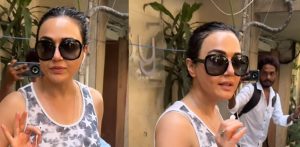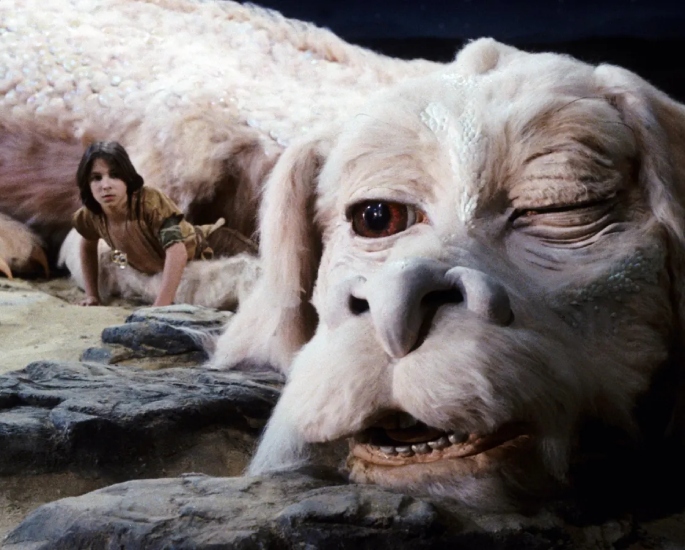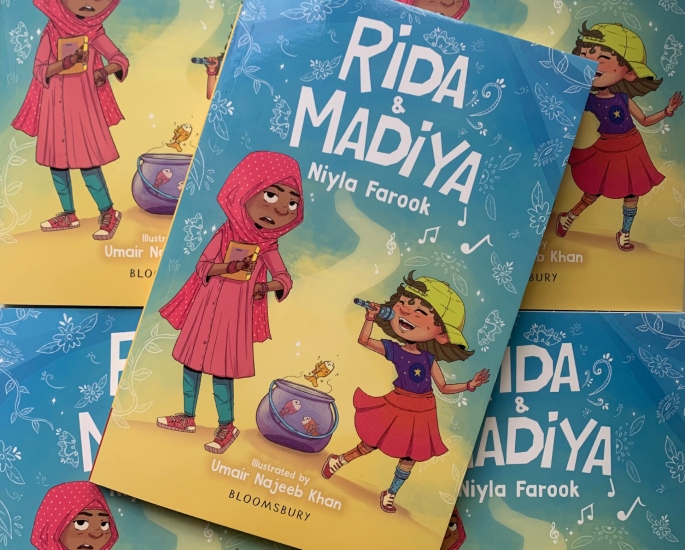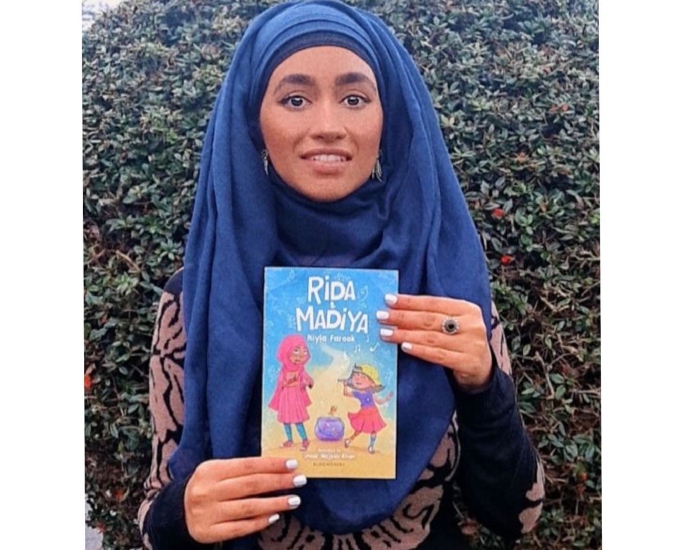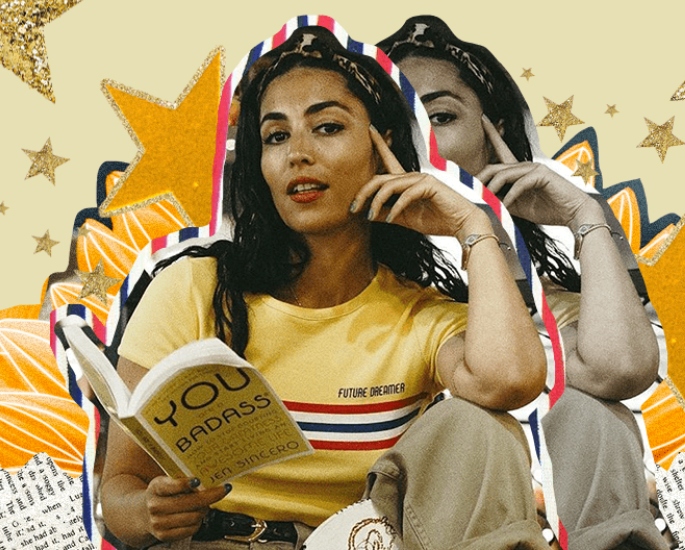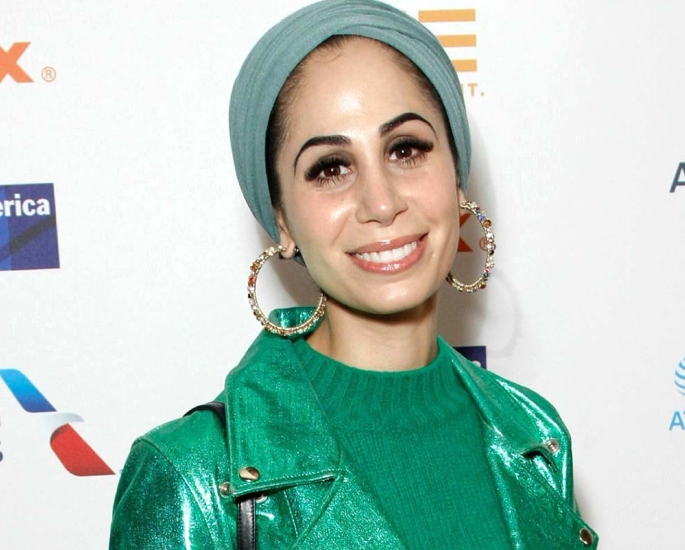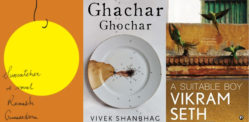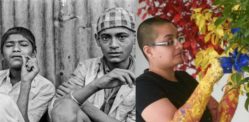"South Asian writers have a story to tell"
Niyla Farook is a young South Asian writer who has published her debut book, Rida and Madiya.
Despite sharing the same mother, Rida and Madiya couldn’t be more different.
Constantly at odds with each other, their competitive nature takes a negative turn when they discover that their local library is facing a crisis.
Instead of collaborating to raise funds, their rivalry only exacerbates the situation.
Saving the library may require them to set aside their differences and work together.
This touching tale of sibling bonds is brought to life with captivating black-and-white illustrations by Umair Najeeb Khan.
To get more of an insight into the book, characters and South Asian stories as a whole, we spoke to Niyla Farook to get her thoughts.
How did your love for writing come about?
My love for writing definitely came from my love for reading.
From a young age, I would read anything from leaflets to books to shampoo bottles!
I remember discovering that a lot of my favourite films like The NeverEnding Story and The Lord of The Rings were based on books, and that was so exciting.
Sadly, my favourite books didn’t feature many (or any, for that matter) diverse characters.
That lack of diversity – fuelling my adamance for making diversely authentic stories – definitely segued my mentality from simply being just a reader to becoming a reader and a writer.
Have any authors inspired the way you write?
There are so many authors who have inspired the way I write!
To confirm, I write for all age groups – Middle Grade, Young Adult, and Adult – in contemporary, mystery, fantasy, historical, thriller (to name a few).
Each genre requires a slightly different writing style, and so different authors have inspired me.
It was quite tricky to narrow down my list of inspiring authors.
For Middle Grade, I love how transportive B.B. Alston’s worldbuilding is and how Aisha Saeed writes such authentic Desi characters that make you feel everything.
Also, any book by Kelly Yang is an instant buy for me because they’re fun and bring out my inner child.
“For Young Adult, Tahereh Mafi has some of the best prose ever. It’s so rich and flowery.”
Fun fact: I remember her being the first Muslim, hijab-wearing YA author I had ever heard of, back in 2012, and that definitely inspired me to pursue my passion for writing (which could answer question one).
Sabaa Tahir creates such rich and raw worlds, and she was the first Pakistani author I had heard about.
Also, Dhonielle Clayton always writes amazing page-turners and has such a beautiful imagination that she reflects in her words.
For Adult, Vaishnavi Patel is an author whose debut (based on Kaikeyi from the Ramayana) absolutely blew me away.
There’s something addictive about the writing style of her book that finds me always going back to read it. S. A. Chakraborty’s books are so immersive and well-researched that I love them to pieces.
Also, Uzma Jalaluddin’s books can make me break into a smile or a laugh on even my worst days – her books are funny and her characters are great.
As a writer, how do you mould your ideas into stories?
I’ve been writing for over five years now, and I think my brain is wired to cling to an idea that I might just dismiss as nonsense if I wasn’t a writer.
This idea could be a line or a single scene, or even a character’s shadow and echoing words. I’ll make a note of it and come back to it.
Almost always, I’m working on another book (I draft at a steady pace but write very fast), so when I’m trying to step back before I dive into edits of my current book, I’ll look into that idea.
All of my fantasy books will have some form of an authentic South Asian root in the centre of it, so I like to link what I’ve researched for the idea and from there, it’s almost freefalling.
Almost – it’s bizarre to me that I cannot begin properly writing until I have a title and all the characters’ names finalized.
I know a lot of authors begin with an untitled work-in-progress, but I can’t do that.
Along the way, I’ll make a list of tropes to avoid and to include.
I will also have a glance through Pinterest to see what I want to include from there, and I’ll make a playlist of the songs that fit the ‘vibes’ of my current work-in-progress.
Then, because I work full-time, I just try to fit some writing in every night and all day, every day on the weekends.
There tend to be good days and bad days but I try to cherish whatever time I can get to write.
Where did the idea for ‘Rida and Madiya’ come from?
The idea for Rida and Madiya came from my love of sisterly books from a young age, and how none of them were diverse.
I didn’t see myself in these characters, no matter how loveable and entertaining they were.
Examples include the Beezus and Ramona series, Ballet Shoes and Big Sister and Little Sister.
“I wanted to create a fun book about sister shenanigans featuring South Asian/Desi characters.”
The bones of Rida and Madiya were built years ago, and I was playing around with the idea mainly for myself (I didn’t think I would be lucky enough to get it published!).
When the opportunity came from the amazing team at Bloomsbury Education to bring Rida and Madiya to life, everything fell into place.
Can you tell us a little about the plot?
It’s an uplifting story about family and overcoming differences.
Rida and Madiya may have the same mum, but that’s about all they have in common.
They argue about everything, and when they find out the local library is in trouble, their competition over who can raise the most money only ends up making things worse between them!
Working together might be the only way to save the library, but can the sisters put their differences aside to do it?
I like to think that there are two major themes of Rida and Madiya.
One is sisterhood. It’s mainly explored in the biological sense – the characters Rida and Madiya share the same mother.
However, it’s also slightly explored in the relationship between Rida and her best friend, Ifeoma.
Their friendship is a form of sisterhood. To me, it’s so important to authentically convey different versions of what ‘sisterhood’ means.
The other major theme is working together.
In the case of Rida and Madiya, the characters are polar opposites who are incompatible, but they come together for a good cause, and that’s to save the library from closing down.
I think that dissimilar people working together for a good, common cause is something that younger readers (and any readers, really) can learn to apply to their everyday lives.
What challenges did you have when writing the book?
Imposter Syndrome is definitely a real thing that happens at any (and even all) stages of the writing process – that is, all the way from drafting to reading the final pass pages.
So, I struggled a bit with thinking I was ‘good enough’, so to speak.
Good enough to publish a book, good enough to represent my culture with glimmers of my religion, good enough to deliver readers with a funny, heart-warming piece of entertainment with sisters at the heart of it.
Overcoming things like this really comes down to having a great support system.
In my case, it’s my family and writer friends. The team at Bloomsbury Education was also very supportive along the way.
In terms of the plot of Rida and Madiya, there was a lot I wanted to explore that I couldn’t, so that was a challenge, in a sense.
I tend to overwrite my books and really want to add as much as I can so some scenes were cut out, both from myself before it was sent to my editors and after.
To overcome this, it was really a case of stepping back and seeing which scenes – however fun they were – were moving the story along, and which were stalling the story.
Another difficulty I had whilst writing Rida and Madiya was reflecting the cultures that were in my own household onto the pages.
“I wanted to be as authentic as possible, but also make children and other people of colour feel seen.”
What if someone from my culture wasn’t aware of the traditions my family did that I wrote into the book?
It took me a while to remember and focus on the fact that I can only write for my own cultures and traditions that would be different by, say, another Desi family.
We’re all different and should embrace that.
There are myriads of South Asians and Muslims and we all have stories to tell. That’s definitely something the publishing world needs to learn.
What made you create this story as a children’s fiction?
This comes down to where I was and how old I was when I first discovered I loved reading. I was at home, probably about seven years old.
No matter where I go, I’ll remember the younger me, looking through the pages of countless books, trying to find reflections of herself in words and illustrations.
It comes down to wanting to connect to something, to feel seen, and I didn’t have that growing up.
Children, teenagers, and even adults search for connections in any form of entertainment, be they books, films, or music.
Even if a child who isn’t of South Asian descent finds their sibling bond as messy as Rida and Madiya’s, for example, then I’ve done my job.
When I had the characters fully fleshed out during the drafting stage, it was a no-brainer to write Rida and Madiya for children.
Plus, writing for children is such a liberating experience because they’re in their formative years.
Also, I can write pretty dark stuff and I don’t think the characters would be the perfect fit for such stuff!
What was it like working with Umair Najeeb Khan?
I really, really admire the work that Umair Najeeb Khan does.
He’s a phenomenal illustrator that brought my characters to life in such an amazing way.
“Rida and Madiya wouldn’t have been the same without him!”
The illustrations are at the beginning of each chapter, and in Rida and Madiya, there are nine chapters so there are nine remarkable illustrations.
They impact the book by setting up the main scene inside each chapter and by bringing it all to life in a way that words do very differently.
Are more South Asian writers getting opportunities in niche genres?
There’s, without a doubt, more work to be done.
As I mentioned, publishing is an ever-changing (unfortunately for the worse, it seems) industry that, if you take a step back, seems to have not changed that much in terms of diversity in the last 100 years.
South Asian writers have a story to tell.
Each one, even with similar premises, will be different and deserves to be told. Unfortunately, that’s not happening in the publishing industry in places like the UK and USA.
There’s so much work to be done. So, so much, that it’s overwhelming.
However, a great place to start is by checking out websites and Instagram profiles of the amazing We Need Diverse Books, Colorful Pages, Rich in Colour, KidLit in Colour, and Subtle Asian Book Club.
Something as quick as liking a post or following an author of South Asian descent is a big help.
Then there are bigger things to do, like purchasing or checking out books in libraries and – quite important of all – leaving reviews.
And of course, having the support of non-South Asian and non-POC readers and fellow writers is a big help.
To go back to one of the themes of Rida and Madiya, if we, South Asian and non-South Asian writers, work together for a good cause – to make gaps for our stories on bookshelves – then we’ll do just that.
I know it’ll be hard, but again, I’m hopeful.
Being a South Asian author, was it harder to get published?
100%, yes.
Publishing is an ever-changing (unfortunately for the worse, it seems) industry that, if you take a step back to look at, seems to have not changed that much in terms of diversity in the last 100 years.
There are fabulous and talented authors of South Asian descent such as myself who are published.
But I can only speak for myself when I say that the traditional publishing route (the other publishing route being self-publishing) is significantly harder for a person of colour than it is for someone who is not of colour.
There’s less shelf space (literally) for authors of colour.
Plus, there’s a notion that having, say, one children’s book featuring a South Asian family on the publisher’s list is enough for a couple of years.
“That’s with the ideology that we’re all the same when we’re not.”
It’s even hard for me to try to (re)score representation for future projects, as a creator of colour, as a South Asian author.
As I aim to get more books published, I don’t imagine it getting any easier. Alas, I have hope.
Has the diversity of the literary landscape changed?
It has, but only slightly. There’s still a load of unacceptable tropes in books where the brown person is a terrorist or is an underdeveloped side character.
But there is an amazing growing number of diverse writers who are remastering the literary landscape.
When I was a child, I didn’t think authors of colour – and especially those of my South Asian background – could become authors.
I didn’t think about the why – I just couldn’t get past the fact that my skin colour was different to the other published authors at that time, at least the ones that I was exposed to.
In an earlier answer, I mentioned Tahereh Mafi being the first Muslim author I’d ever heard of, and Sabaa Tahir being the first Pakistani author I’d ever heard of.
Positively, we’re getting closer to the stage where young and older children don’t think that only white people can be authors, like I did.
But again, there’s a huge amount of work to be done.
Can you tell us about any future projects you’re working on?
I have so many future projects but the hurdle is getting representation so the books can sell to publishers so they can be traditionally published.
As a South Asian author and woman of colour, I’ve been programmed to think about if each idea is publishable in an industry where privileged authors can do as they please.
Maybe that’ll strengthen my skills one day, who knows?
“I absolutely will venture into other genres!”
Funnily enough, the first-ever book I wrote was a YA Fantasy.
I have so many fantasies in the pipeline – western fairytale retellings in South Asian settings, fictionalised stories about South Asian key historical figures, and fun fantasies set in South Asian-inspired backdrops.
I’ve written and plan to write contemporaries and romcoms with South Asian characters, as well as mysteries, thrillers, and so many more genres with South Asian characters that are as authentically portrayed as possible.
You can follow me online for specific updates.
Grab your copy of Rida and Madiya here.














